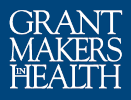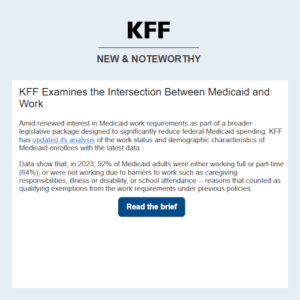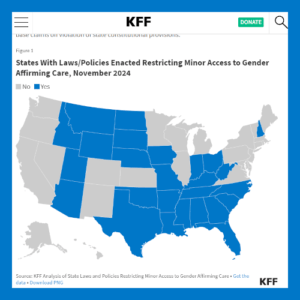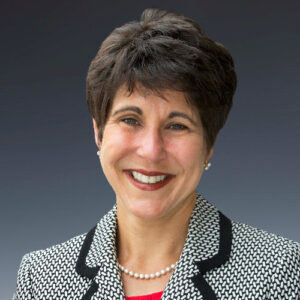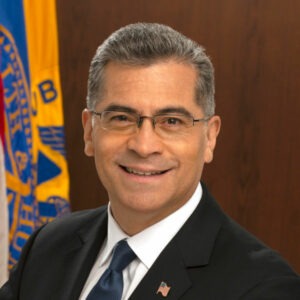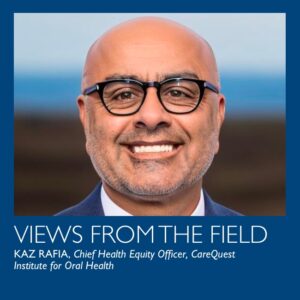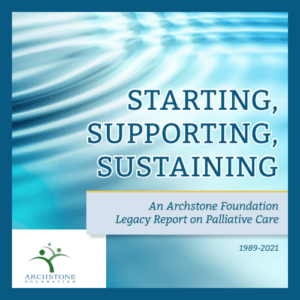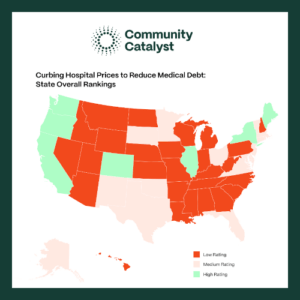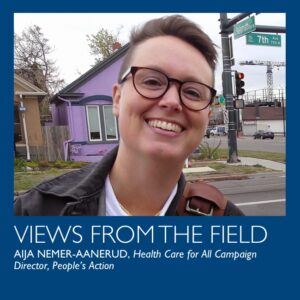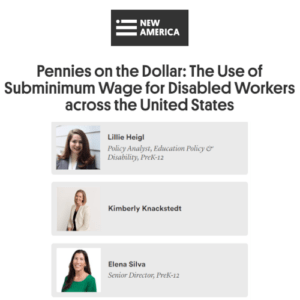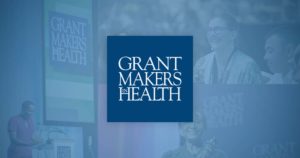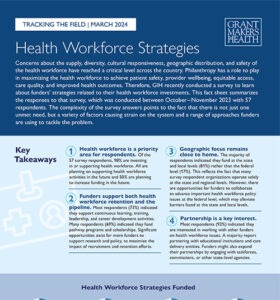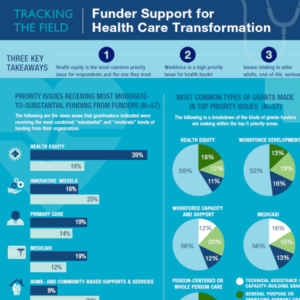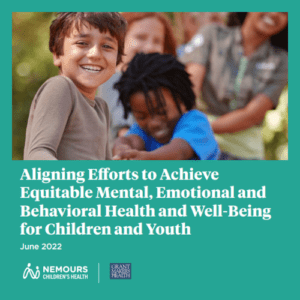Featured Resources
Data Show That The Majority of Adult Medicaid Enrollees are Working
Amid renewed interest in Medicaid work requirements as part of a broader legislative package designed to significantly reduce federal Medicaid spending, KFF has updated its analysis of the work status and demographic characteristics of Medicaid enrollees with the latest data.
Youth Access to Gender Affirming Care at the Supreme Court: What to Know
Ahead of December 4 arguments in a Supreme Court case (U.S. v. Skrmetti) challenging the constitutionality of Tennessee restrictions for gender affirming care for minors, KFF explores the background of the case and potential rulings.
Explore Access and Quality Topics
Latest Resources
Sustaining Health Care Improvement Initiatives through Policy
Many foundations now recognize their own responsibility and the opportunity to improve the sustainability of grant projects by taking active roles in advocating for important public and private policy changes. By partnering with grantees and by capitalizing on their unique roles, foundations can work with policymakers to continue successful programs through ongoing policies that sustain transformative efforts.
The Road Less Traveled: Integrative Medicine and U.S. Health
The United States is among the wealthiest nations in the world, but it is far from the healthiest. It is clearly time to re-evaluate and look for innovation and systemic changes in mindsets and health care practice. A deeper understanding and integration of the principles and practices of complementary and alternative health care systems offers some significant opportunities for change.
Nonprofit Competition in the Health Insurance Exchange: Consumer Operated and Oriented Plans
When the Affordable Care Act was passed, Section 1332 established the Consumer Operated and Oriented Plan (CO-OP) program, which offers a consumer-friendly, high-quality nonprofit competitor to provide affordable insurance products to the small employers and individuals that will be served by the health insurance exchanges.
Coming Soon? The Ongoing Effort to Promote Better Depression Services in Primary Care
Depression is one of the most common disabling and debilitating health conditions in the United States and internationally. To ensure better depression care for older patients, The John A. Hartford Foundation has advocated for the Improving Mood–Promoting Access to Collaborative Treatment (IMPACT) model as the standard approach to the delivery of mental health services in primary care.
Integrating Health Services for People with Co-Occurring Mental Health and Substance Use Disorders
Care for people with co-occurring conditions remains terribly fragmented. Three separate systems exist—health, mental health, and substance use services— to care for each individual problem, each one with its own set of norms, culture, regulations, reimbursement process, and accountability.
Dental Hub and Spoke Project Links Kansans in Underserved Areas to Dental Care
Kansas, like many states with a vast rural geography, has substantial areas with little or no access to oral health services. Studies of the Kansas dental workforce show 93 of 105 counties do not have enough dentists to serve their population.
Publications and Reports
2024 Survey Summary: Health Workforce Strategies
Concerns about the supply, diversity, cultural responsiveness, geographic distribution, and safety of the health workforce have reached a critical level across the country. Philanthropy has a role to play in maximizing the health workforce to achieve patient safety, provider well-being, equitable access, care quality, and improved health outcomes. Therefore, GIH recently conducted a survey to learn about funders’ strategies related to their health workforce investments.
Funder Support for Health Care Transformation
This infographic summarizes the responses to a Grantmakers In Health funder poll, conducted October 2022, on how philanthropy is supporting health care transformation efforts, especially those concerned with improving quality of life, coordinating complex care, and taking patient preferences into account.
